Hamburger SV currently sit in the first position of the 2. Bundesliga with 20 points out of their first nine games. They drew against Jahn Regensburg and Darmstadt and lost the derby against St. Pauli on the sixth matchday. VfB Stuttgart sit in second position having also collected 20 points. The big difference between the two teams is their goal difference. Hamburger have a value of 14 having scored 21 goals and conceded just seven. On the other hand, Stuttgart have got nine goals against them and were able to score 15 times.
So, their defence, as well as the offence of Hamburg, performed better than in Stuttgart’s case. Besides, Hamburger SV have got the lowest xG-value of the whole league with 0.86. In this tactical analysis, we will look at the defensive system and tactics of HSV which are one of the reasons for their successful season so far.
Formation and players
In this campaign until now Dieter Hecking has used exactly two formations which are quite similar and have just one difference. He lined his team up either in a 4-1-4-1 or a 4-2-3-1 formation and the only variation can be seen in central midfield. Hamburg either played with one defensive midfielder and two more offensive players in front of them. In the other case, they used a double-pivot and a more advanced man behind the single striker.
But Hecking doesn’t just change the system from game to game, but also sometimes during the match depending on the situation. When they need to defend a lead, for example, Hamburger used the 4-2-3-1 formation since then they have two men in front of the back four. On the other hand, when they have to fight back, they prefer the 4-1-4-1 formation to have one more player in the offence.
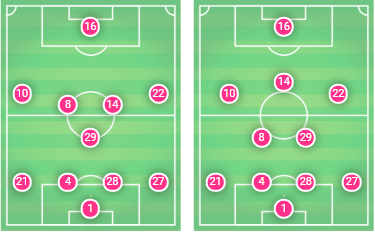
Daniel Heuer Fernandes has this season featured in every game between the sticks while the centre-back Rick van Drongelen, as well as the left-back Tim Leibold, played every single second in the 2. Bundesliga as part of the back four. Due to several injuries, they rotated on the second centre-back position as well as on the right-back position. In the defensive midfield, Adrian Fein has also played every single minute. On all the other positions, Hecking has rotated. However, this shows that the goalkeeper, two players of the back four, as well as the single defensive midfielder and part of the double pivot respectively, know each other well since they always play together. This gives a defensive structure and the whole team a certain kind of self-confidence.
Pressing scheme
They varied mostly between two different tactics as we will see now in this analysis. On the one side, they used a high pressing while in other situations they sat back deeper in their 4-1-4-1 and 4-2-3-1 system respectively. We will now firstly look at the scheme which they used when they executed the high pressing.
In these cases, the striker; who was most often Lukas Hinterseer, used a curved run to put pressure on the goalkeeper or one of the centre-backs. Due to the curved run, which is shown in the image below, the Austrian forced his opponents to play the ball out wide to the full-backs and wing-backs respectively. These were the two most important tasks for Hinterseer since Hecking wanted to put pressure on at the opponents in the wide areas.
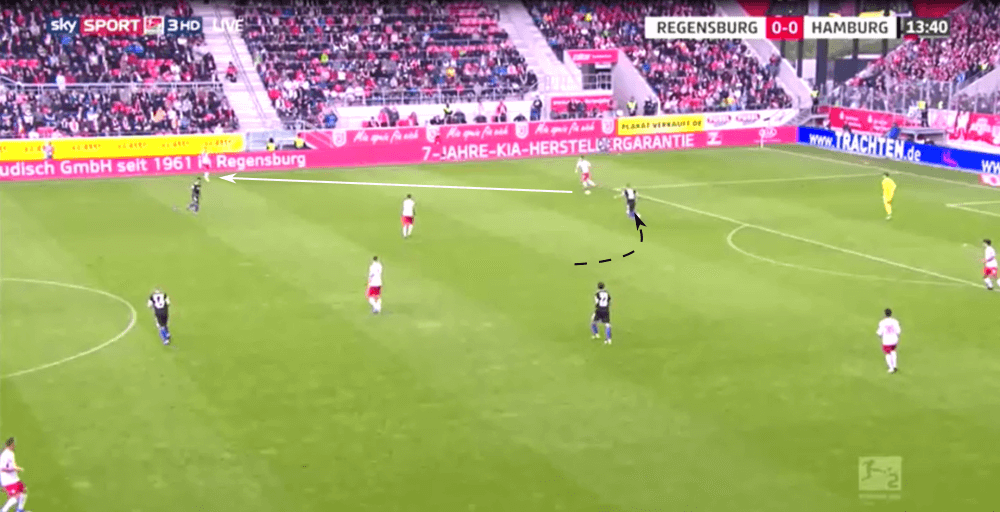
As soon as the pass was played to the wide players, they tried to create numerical equality or even numerical advantage to win back the ball. To do so, the striker shifts to the according side as well as the central midfielders and the winger of the opposing side. Mostly, the winger of the according side had then the task to put pressure on the opponent on the ball as you can see in the example below.
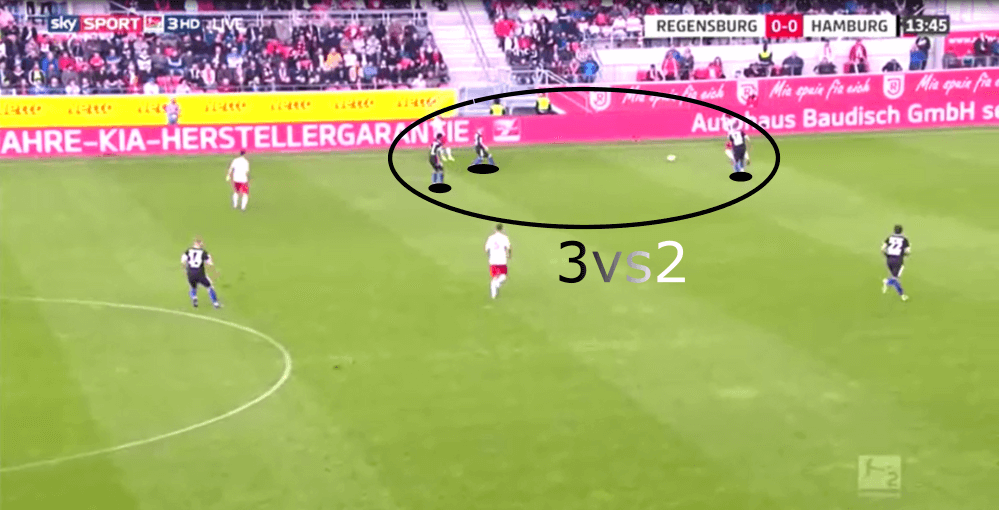
This pressing scheme helped Hamburger to either win the ball high up the pitch or forced the opposition to play long balls which the defenders of the HSV easily defended due to their ability to win aerial duels. Van Drongelen is especially good when it comes to this aspect of the game.
Avoiding attacks through the centre
However, when they decided to sit deeper they tried to keep the distance between the single players as well as the space between the lines very small. With the aid of that, they tried to prevent the opponent attacking through the middle. In light of this, their opponents mainly attacked over the flanks since there was the space as it can be seen in the image below.
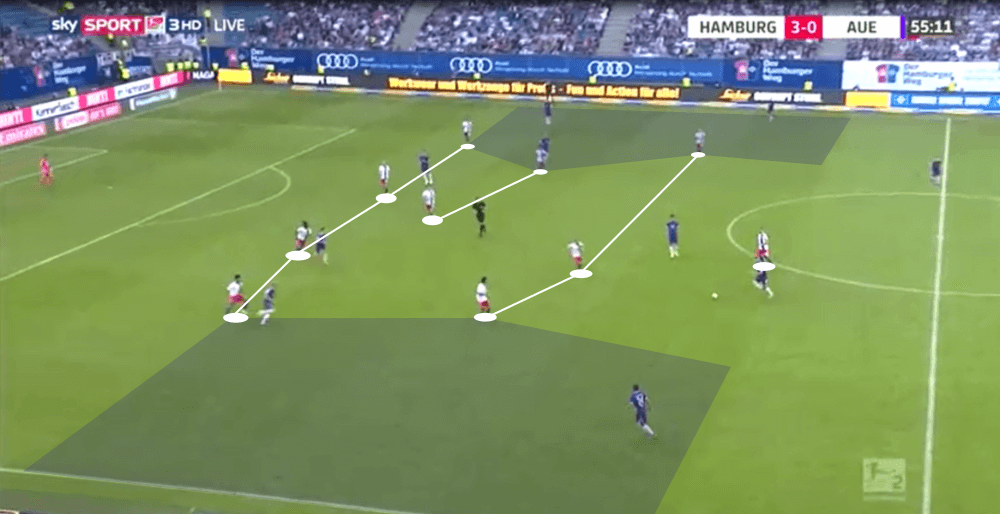
Considering this, their opponents crossed on average 12.78 times per 90 minutes. The reason why they accepted this was that the Hamburger SV are able to defend crosses due to their players who are strong in the air. Just 64.3% of the crosses of the opposition were successfully defended by the defenders of the team of Hecking. Because of that, they preferred to force the opposition into the wide areas where they had no other choice but to cross the ball rather than let them attack through the centre.
Hecking’s side use a kind of pattern to defend crosses. The according full-back moved logically out onto the wing to try to stop the cross. The other three members of the back four lined themselves up in the penalty box to cover the first and far post as well as the space in between. Also, one of the central midfielders either joined them in the box to support them or positioned on the edge of it to be in the right position to win cleared balls. This pattern can be seen in the images below
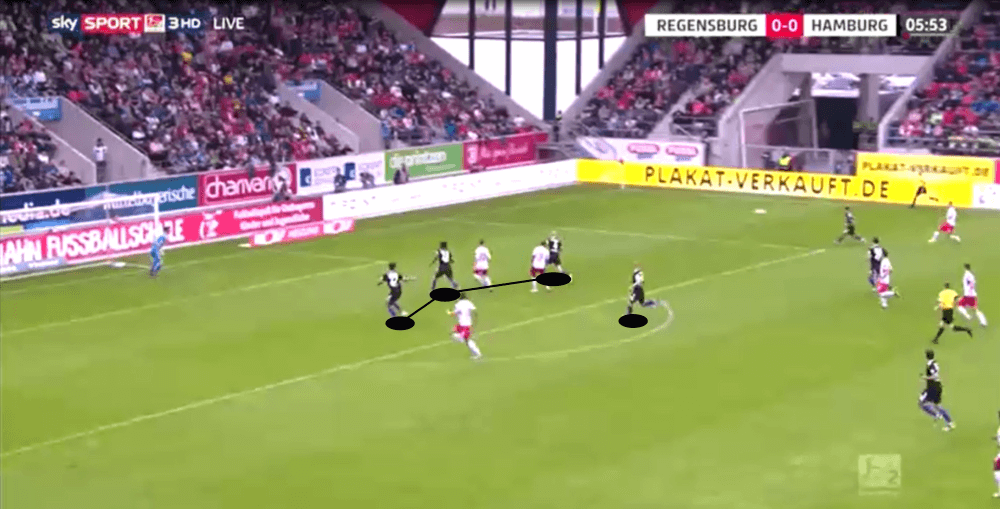
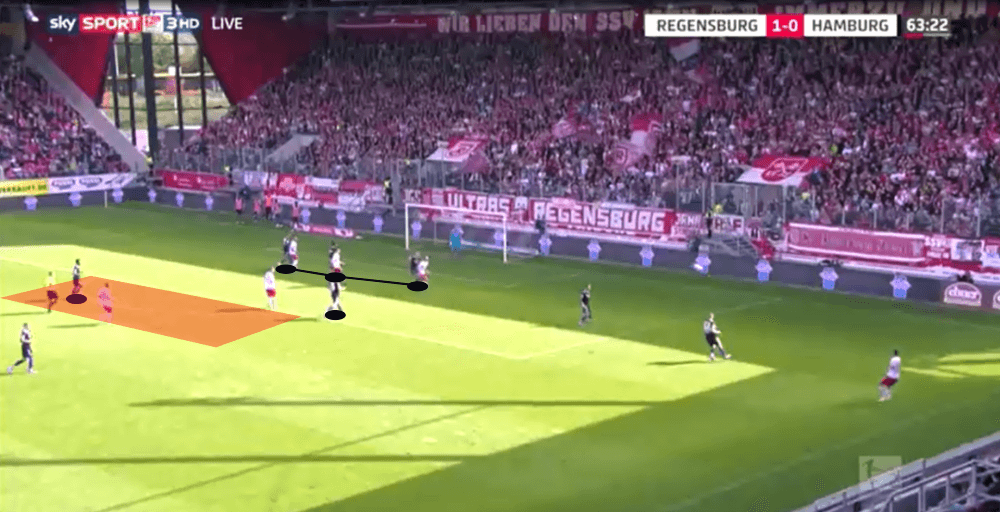
Individual quality paired with active defending
However, these two tactics alone are not enough to just concede seven goals in nine games. One of the main reasons for their good record is the quality of their defenders and their way of defending, especially during counterattacks. Since HSV have on average 60.74% possession and dominate the match, the opponents also try to create goalscoring opportunities with the aid of counterattacks. In these cases, the defenders of Hamburg are proactive and try to stop the moment of transition, when possible.
This can be seen in the example below as Timo Letschert knows which pass the opponent wants to play and sprints into the right space to intercept the pass. He had also the possibility to stay in this position and let the opposition pick up speed, but he decided to take the risk and it paid off.
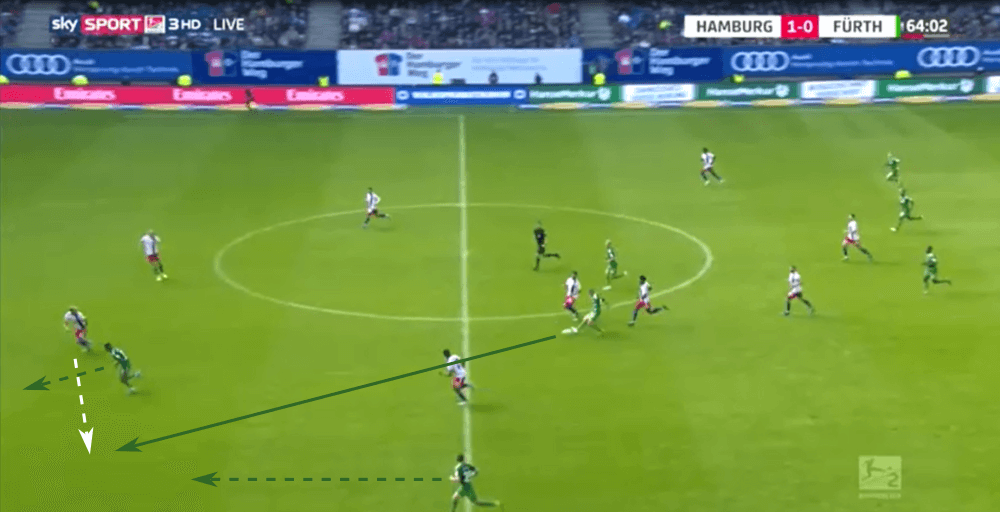
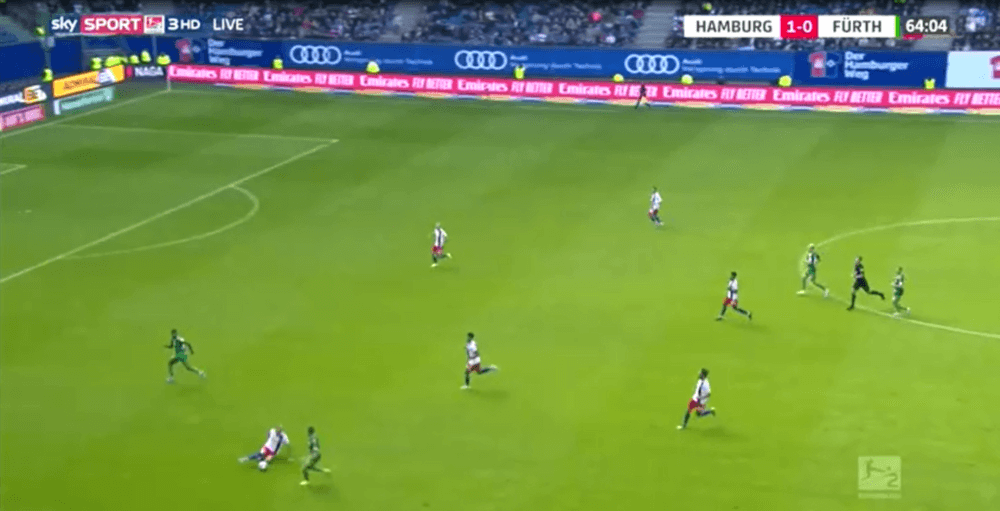
A similar situation can be seen in the example below as Gideon Jung steps out to get into the defensive duel which he won. He took a certain risk since due to his sprint, the opponent in his back was completely free, but he had to do so to stop the counterattack.
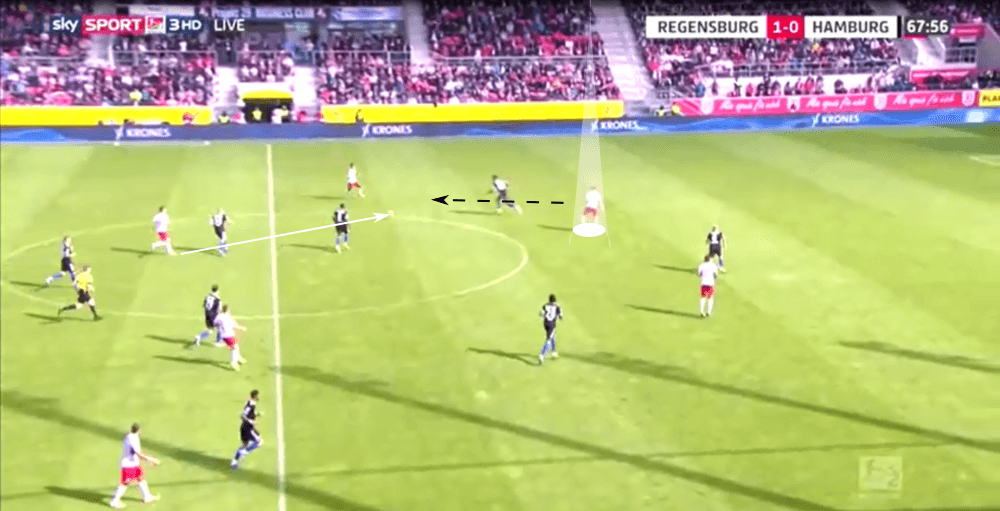
Both sequences are great examples which showcase the proactive style of play of the defenders and also their individual quality. Both factors are key in the tactics of HSV and some of the main reasons for the fact that they have conceded just seven goals during the first nine games and have the lowest xG-value of the league.
Conclusion
This scout report showed there isn’t just one reason which alone proves why Hamburg concede so few goals. It’s the combination of their tactics which were described in this analysis as well as their individual quality and their discipline.
If they are able to keep up their good work, defensively as well as offensively, they have a clear chance to get back up to the first German division. However, we’ll have to wait for the rest of the season to see if they can continue to perform on such a high level.

If you love tactical analysis, then you’ll love the digital magazines from totalfootballanalysis.com – a guaranteed 100+ pages of pure tactical analysis covering topics from the Premier League, Serie A, La Liga, Bundesliga and many, many more. Buy your copy of the October issue for just ₤4.99 here





Comments